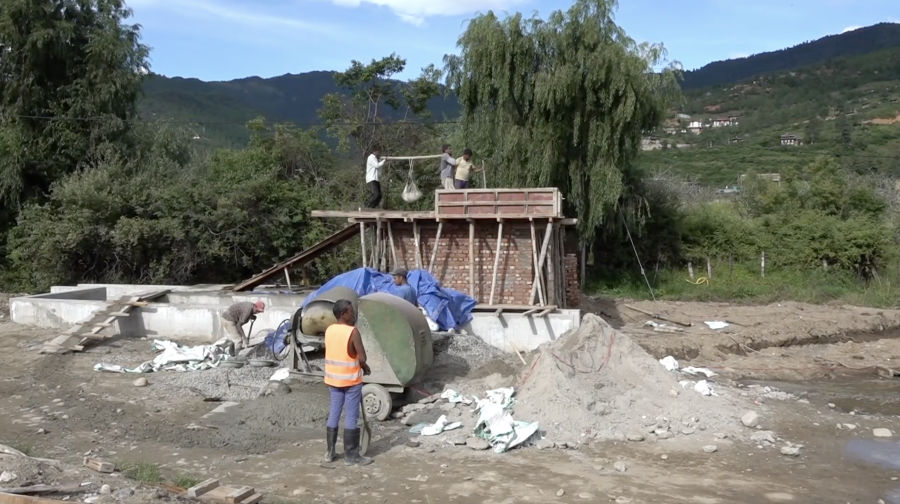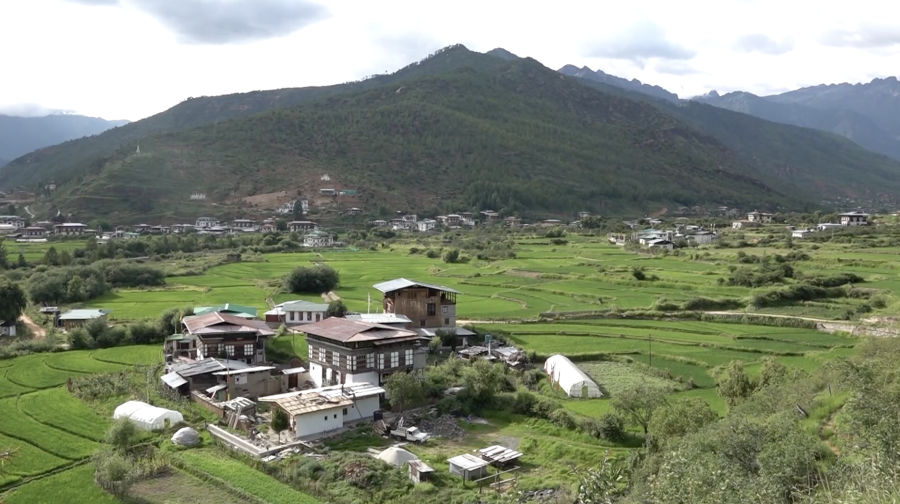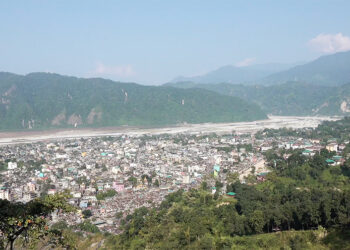 Inspired by the success of Shaba’s solar lift irrigation system, Hungrel Gewog’s Changsima Village in Paro is now constructing its solar irrigation system. After years of struggle with erratic and insufficient irrigation, farmers hope to have enough water by next year’s paddy season.
Inspired by the success of Shaba’s solar lift irrigation system, Hungrel Gewog’s Changsima Village in Paro is now constructing its solar irrigation system. After years of struggle with erratic and insufficient irrigation, farmers hope to have enough water by next year’s paddy season.
The paddy fields in Changsima appear lush and green, but this landscape masks the ongoing struggle of farmers who grapple with inadequate irrigation.

For years, farmers have depended on a distant water source in Dopshari Gewog.
After a long and difficult journey, only a small amount of irrigation water reaches the fields, particularly those in the lower areas.
Farmers even tried using an electric pump, but they say the cost was too high.
Changsima Tshogpa Tashi Tshering said, “Irrigation has been one of our biggest challenges. The water source is around seven kilometres away, so by the time it gets here, there’s very little left. This issue has persisted for years.”
“Irrigation has always been a challenge here in Hungrel. The water source is nearly two gewogs away, and people have to walk long distances just to access it. By the time it reaches our fields, there’s barely enough left,” said Tandin Tshewang, the Offtg District Agriculture Officer.
To solve the problem, Hungrel Gewog is now building a solar lift irrigation system. Bhutan Trust Fund for Environmental Conservation is funding the project, which costs around Nu 8.1 M.
The work began in July and is expected to be completed by the end of the year. It will benefit 30 households.
“Things have improved compared to the past, and we’ve received support from everyone. But the problem hasn’t been fully solved. An irrigation pump like this won’t just help address water scarcity; it could also rekindle farmers’ interest in agriculture,” said Tandin Wangchuk, a resident of Changsima.
Shaba Gewog’s Gangri village was one of the first to adopt solar irrigation. The village, once hit hard by water shortages, installed a solar lift system in 2022 with support from ICIMOD. Now, 35 households use it to irrigate their fields consistently.
Locals say it has transformed farming in the village.
The solar system also produces surplus electricity. Villagers plan to sell the excess power to Bhutan Power Corporation (BPC).
“In winter, we rarely need to use the solar pump, so the system generates excess electricity that gets fed back into BPC’s grid. But during the summer, it’s a different story. We use it every day to irrigate the fields, rotating between different households,” said Passang Dorji, a resident of Gangri in Shaba.
The government is planning to expand solar irrigation to other districts. Officials see it as a cleaner, cost-effective alternative to diesel and electric systems.
A recent report by the International Development Research Centre and ICIMOD calls solar lift irrigation a present necessity, especially as traditional water systems struggle to cope with climate change and growing demand.
Karma Samten Wangda
Edited by Sangay Chezom







